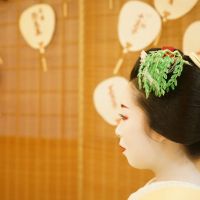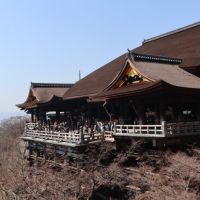How to enjoy Gion festival in Kyoto 2020
Masaya Osada
Latest posts by Masaya Osada (see all)
July is the special month for people in Kyoto. After a whole month lasting rain in June, downtown in Kyoto changes the atmosphere totally in the following month. People become aware that Gion festival, the annual big event in summer, which is known familiarly as “Gion-san” by elderly locals comes very soon by hearing the distinctive sound, seeing various goods related to the festival throughout a town in July. A number of tourists visit Kyoto in this season to join the festival every year. This information is here to enjoy it efficiently in short visit.
Contents
What is Gion festival (Gion Matsuri)?
Gion festival (祇園祭/Gion Matsuri) is not only famous as one of three biggest festivals in Kyoto, but also one of the typical festivals in Japan. More than a million visitors each year come to see this most popular festival, which is listed in UNESCO Intangible Cultural Heritage. This festival originated as a religious ceremony to appease the gods during an outbreak of plague in 869. Gion festival owes its name to Gion district in Kyoto but the main events of this festival do not take place in the district but rather at Shijyo-kawaramachi and Shijyo-karasuma area.

Floats displayed are lit up with dozens of lanterns, and the festive music known as Gion-bayashi which signify advent of summer to locals can be heard everywhere in the area. Indistinct lanterns lights on the displayed floats give fantastical and nostalgic atmosphere and visitors are fascinated with the visual scene.
Schedule of Gion festival in Kyoto, 2018
Gion festival takes place over the entire month of July. There are many different events, However, many of the events are mostly small and unspectacular. The main events are two processions of traditional parade floats called Yamaboko-Junko held on 17th and 24th July.

Two types of floats “Yama and Hoko” are collectively called Yamaboko (or Yamahoko). 23 Yama and 10 hoko are used in the procession. Hoko is usually about 25 meters tall with long pole shaped like a spear, weigh up to 12 tons, about 30~40 people needed to pull it, usually two men piloting with the wedge. 23 of the smaller Yama decorated part of a pine tree on the top, carry life-size figures of famous and important person. Both Yama and Hoko are praised as “Moving art” because these are gorgeously decorated with exquisite tapestries of Nishijin textiles (typical traditional textile in Kyoto) and unique sculptures.
The processions of floats (Yamaboko Junko) take place between 9:00 and 11:30 on the 17th and 24th and follow a three-kilometer route along Shijo, Kawaramachi, and Oike streets. Good viewpoints can be found elsewhere without too much trouble as the procession takes place over quite a long route and duration. The intersection of Kawaramachi-oike or Shinmachi-oike are less crowded spot to watch changing the direction of Hoko called Tsujimawashi. Be careful not to forget preparation for battle with the heat and direct daylight.
Procession route on 17th July
Shijo-Karasuma(9:00)→ Shijo- Kawaramachi(9:35)→Kawaramachi-Oike(10:20)→ Shinmachi-Oike(11:20)
Procession route on 24th July
Karasuma-Oike(9:30)→ Kawaramachi-Oike(10:00)→ Shijo-Kawaramachi(10:40)→ Shijo-Karasuma(11:20)
(Time stated above will be sometimes a little behind schedule.)
Yoiyama, most exciting Gion festival evenings in Kyoto downtown from 14th to 16th July

The closest station on Hankyu-line is Karasuma station, However, I recommend you to get off at the less crowded station, Hankyu Omiya station or Hankyu Kawaramachi station which takes only about 15 min to Karasuma area by foot. You can see many shops on Shijyo street in the case that you get off at Hankyu Kawaramachi station. Shijyo station on the subway, Gion-shijo on Keihan Line is also the nearest station but filled with swarms of people.
Karasuma area becomes most exciting from 18:00 until 23:00 on 15th and 16th July.
The streets are closed to traffic and food stands, drink vendors line both sides of the street. Highlight streets for stalls are part of Karasuma street, Takoyakushi street, and Shinmachi street. The area becomes increasingly crowded at the first 2 hours from 18:00 and there is no space to move in such alleys. Note that less-peak hour is after 21:00. Be careful not to go down the wrong way on a one-way street as polices controls.
Many young ladies and young men dressed in Yukata (traditional summer costume), walk around the area, carrying with them traditional purses and paper fans which makes these events very picturesque. You can enjoy much more these events with dressing in yukata like a Japanese. For information of yukata rental shop, see this website in English. https://kyotokimono-rental.com/en/access/kyotostation
In addition to the stunning procession of floats and vibrant evening festivities, the Gion Festival offers a unique cultural experience through the ‘Hochoshiki Knife Ceremony.’ This traditional ceremony showcases the artistry and precision of Japanese knife-making and offers a glimpse into the ceremonial aspects of Japanese culinary traditions. Held in a serene setting, it’s a must-see for those interested in the deeper cultural practices of Kyoto.
https://www.hochoshiki-knifeceremony.com/

A sacred place for Japanese food, a treasure house of ingredients, Minami-Boso Takaya Shrine Kitchen knife ceremony "Ryumon-no-Koi" long story: edited by Minamiboso City Tourism Association Channel
In Conclusion

Maiko during Gion Festival
You can discover something interesting from this attractive event.
It’s sure that Gion festival gives you a special impression and different aspect of Kyoto.
The experience, walking around dressed in Yukata, Tasting night stalls foods, Visiting Yamaboko to see the gorgeous decoration, Listening to traditional music, Looking for a special souvenir, is just a part of suggestions to enjoy Gion festival. Visit the most popular, enjoyable festival and have a fun with locals!
Even foreigners can now have access to Geisha and Maiko

We are proud to offer an excellent opportunity for foreign visitors to Kyoto to meet and interact directly with Geisha, at an exceptional price, every Tuesday, Thursday, and Sunday from 6 pm to 8 pm. This tour includes dinner, an English guide, watching a traditional dance performance, and be able to play a unique game with the Geisha.
Are you curious about this tour? Check the detailed information, and make an online reservation now to meet an authentic Japanese Geisha in Kyoto!




